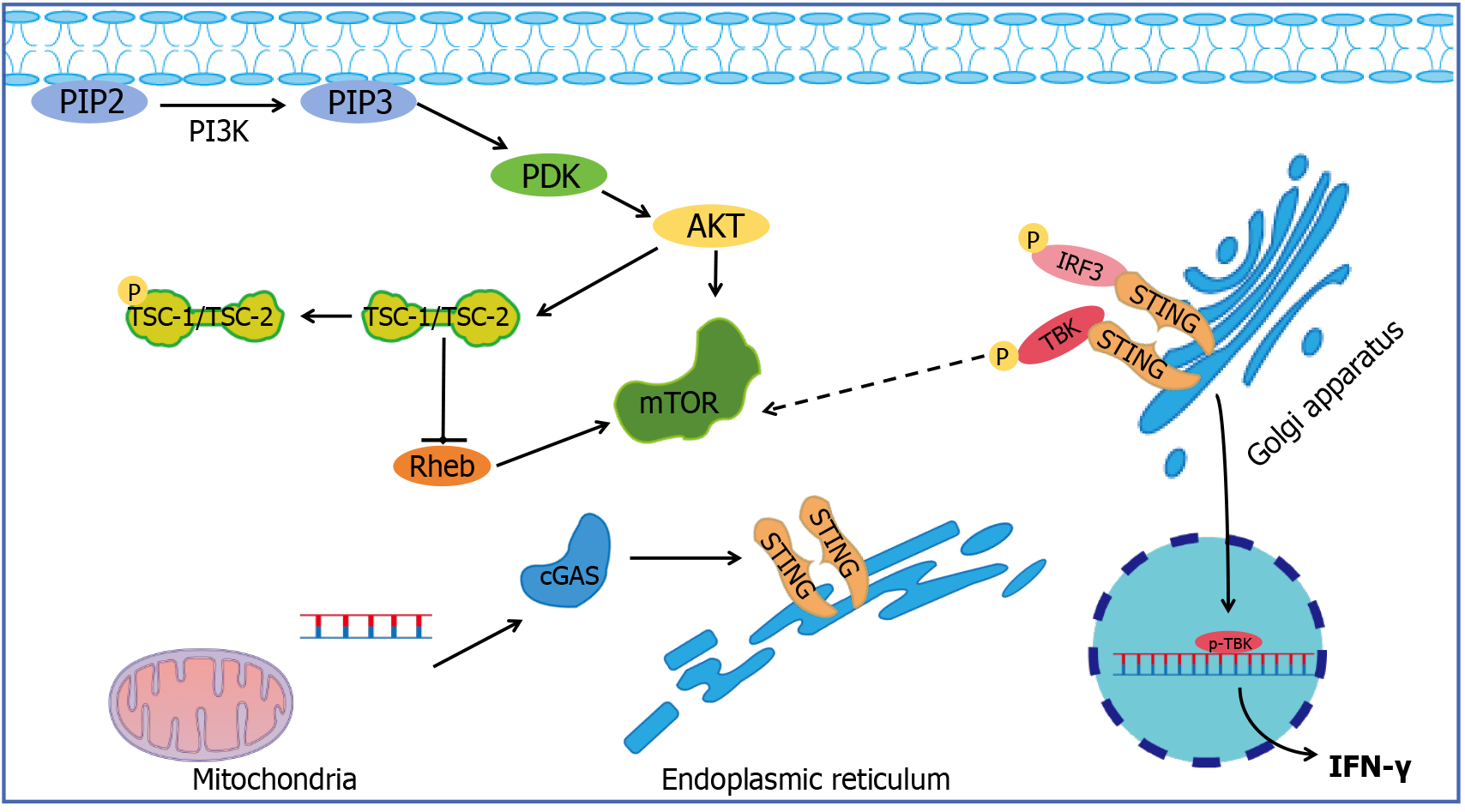Copyright
©The Author(s) 2024.
World J Diabetes. Oct 15, 2024; 15(10): 2041-2057
Published online Oct 15, 2024. doi: 10.4239/wjd.v15.i10.2041
Published online Oct 15, 2024. doi: 10.4239/wjd.v15.i10.2041
Figure 1 The binding of cyclic guanosine monophosphate-adenosine monophosphate synthase to double-stranded DNA results in its activation as a secondary messenger, leading to the production of cyclic guanosine monophosphate-adenosine monophosphate.
Cyclic guanosine monophosphate-adenosine monophosphate then binds to interferon gene stimulating factor (STING), which is bound to the endoplasmic reticulum (ER) membrane, thereby causing its activation. STING conformational change and transfer to the Golgi apparatus. In the Golgi apparatus, the two cysteine residues of STING (Cys88 and Cys91) are palmitoylated. Subsequently, STING will recruit TANK binding kinase 1 (TBK1) and interact with it. TBK1 phosphorylates interferon regulatory factor 3 (IRF3), triggering dimerization, nuclear translocation, and induction of target genes in IRF3, thereby affecting interferon production. Activated protein kinase B can directly phosphorylate mammalian target of rapamycin (mTOR); or inhibit the activation of Ras homolog enriched in brain by inactivating tuberous sclerosis complex 2, and then enhance the activation of mTOR. TBK1 increase the activation of mTOR, on the contrary, phosphorylation of TBK1 inhibits the activity of mTOR. PIP2: Phosphatidylinositol-(3,4)-P2; PIP3: Phosphatidylinositol-(3,4,5)-P3; PI3K: Phosphatidylinositol 3-kinase; PDK: Phosphoinositide-dependent kinase; mTOR: Mammalian target of rapamycin; cGAS: Cyclic guanosine monophosphate-adenosine monophosphate synthase; STING: Stimulator of interferon gene; TSC: Tuberous sclerosis complex; Akt: Activated protein kinase B; TBK: TANK binding kinase; IRF: Interferon regulatory factor 3; IFN: Interferon; Rheb: Ras homolog enriched in brain.
- Citation: Fan MW, Tian JL, Chen T, Zhang C, Liu XR, Zhao ZJ, Zhang SH, Chen Y. Role of cyclic guanosine monophosphate-adenosine monophosphate synthase-stimulator of interferon genes pathway in diabetes and its complications. World J Diabetes 2024; 15(10): 2041-2057
- URL: https://www.wjgnet.com/1948-9358/full/v15/i10/2041.htm
- DOI: https://dx.doi.org/10.4239/wjd.v15.i10.2041









